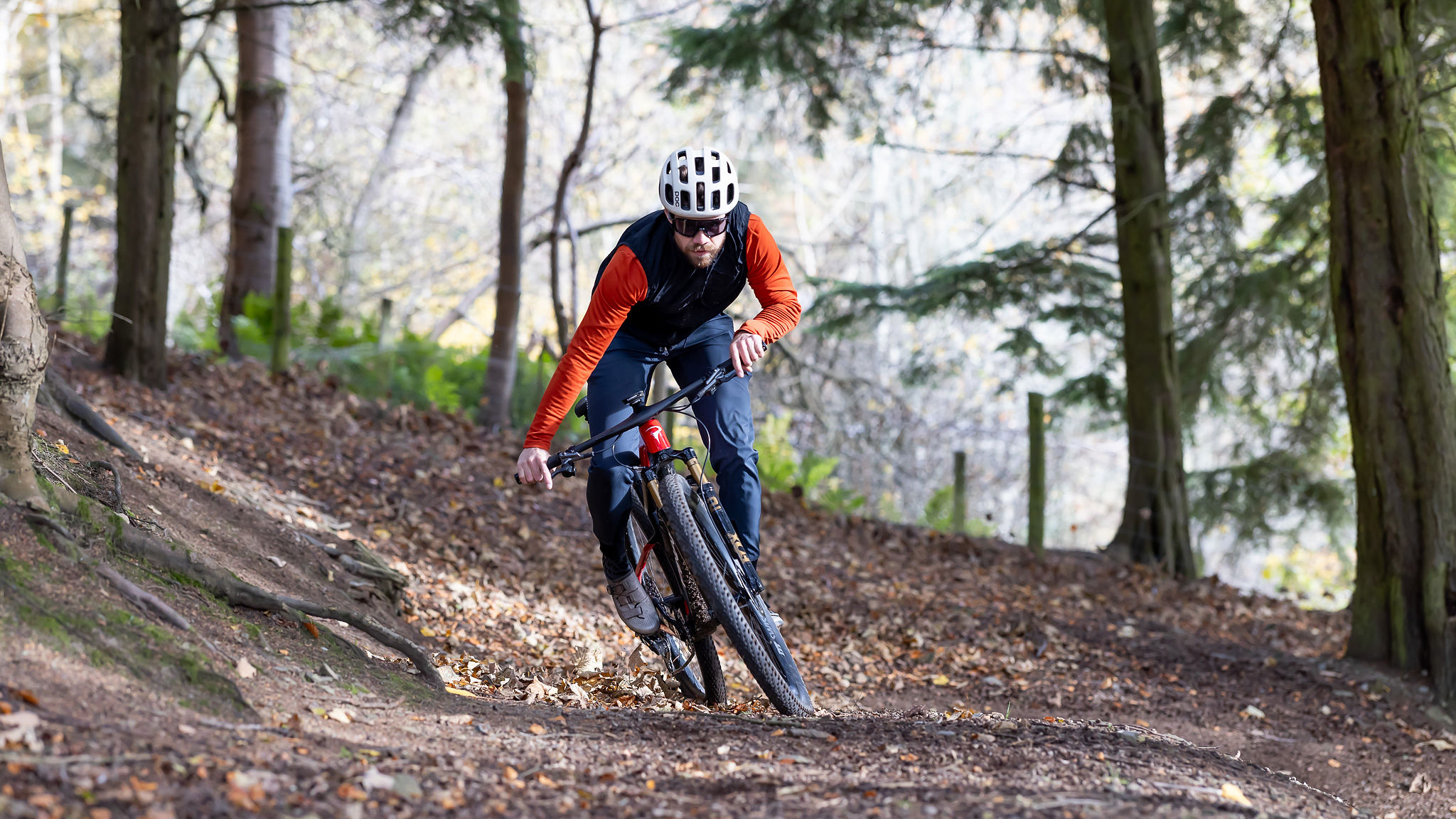Best mountain bikes for beginners 2026 – top trail-ready bikes for novice riders
The best mountain bikes for beginners offer value for money component packages and predictable handling. Here's our pick of the best models available today
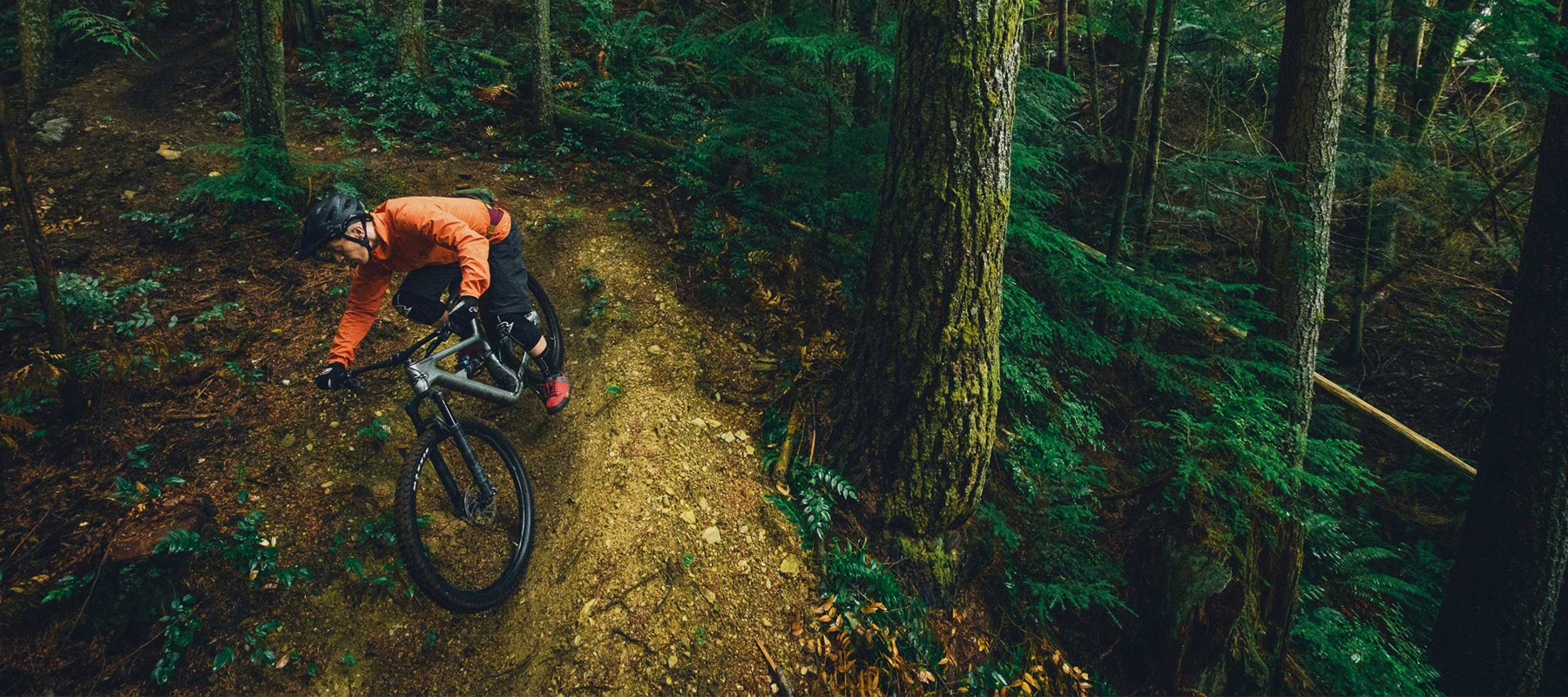
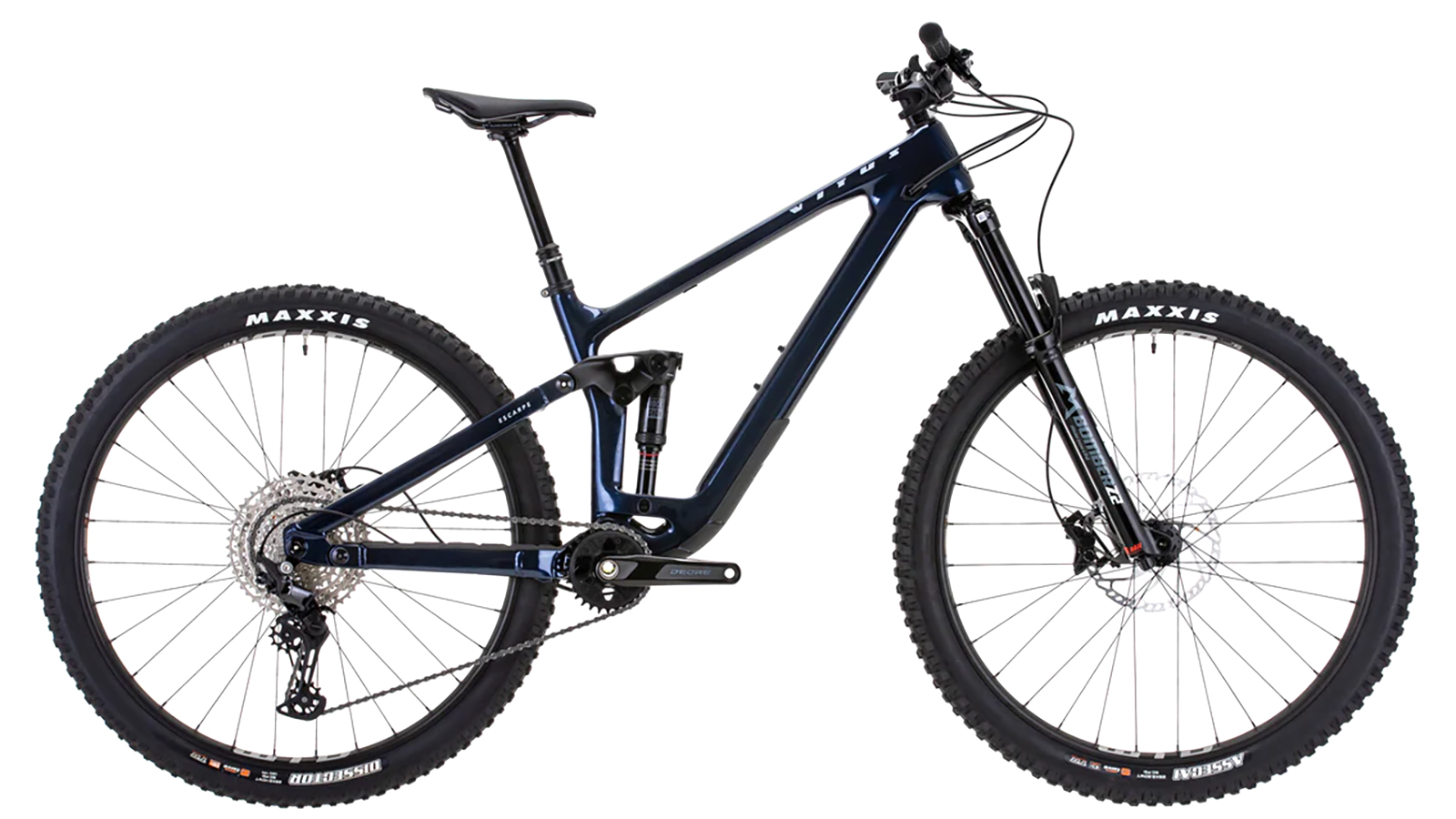
1. Best overall
2. Best bombproof
3. Best for tough trails
4. Best for XC speed
5. Best full-suspension
6. Best for trail shredding
How to choose
Buying a new mountain bike is hard as the sheer number of available options can make it a daunting prospect – even for the seasoned mountain biker. Choosing the best beginner mountain bike is about finding quality component packages and predictable handling, all at a decent price.
Should a beginner mountain biker buy one of the best hardtail mountain bikes or the best full-suspension mountain bikes? We usually recommend a hardtail to start off on, but luckily the best budget mountain bikes can encompass both genres.
There are loads of different types of mountain biking and bikes dedicated to each of those disciplines, but for most new riders trail mountain biking is the best place to start.
Our expert reviewers have compiled this handy guide to the best mountain bikes for beginners. Our overall top pick is the Trek Roscoe 8 hardtai, but if you're after full-suspension, our choice is the Cannondale Habit 4.
If you are unsure of what you want or have some questions of your own, skip straight to the bottom of this article for our guide on how to choose the best mountain bikes for beginners. We've also got a full guide to must-have features to consider when buying a new mountain bike.
Best mountain bikes for beginners
Why trust BikePerfect
1. Best overall
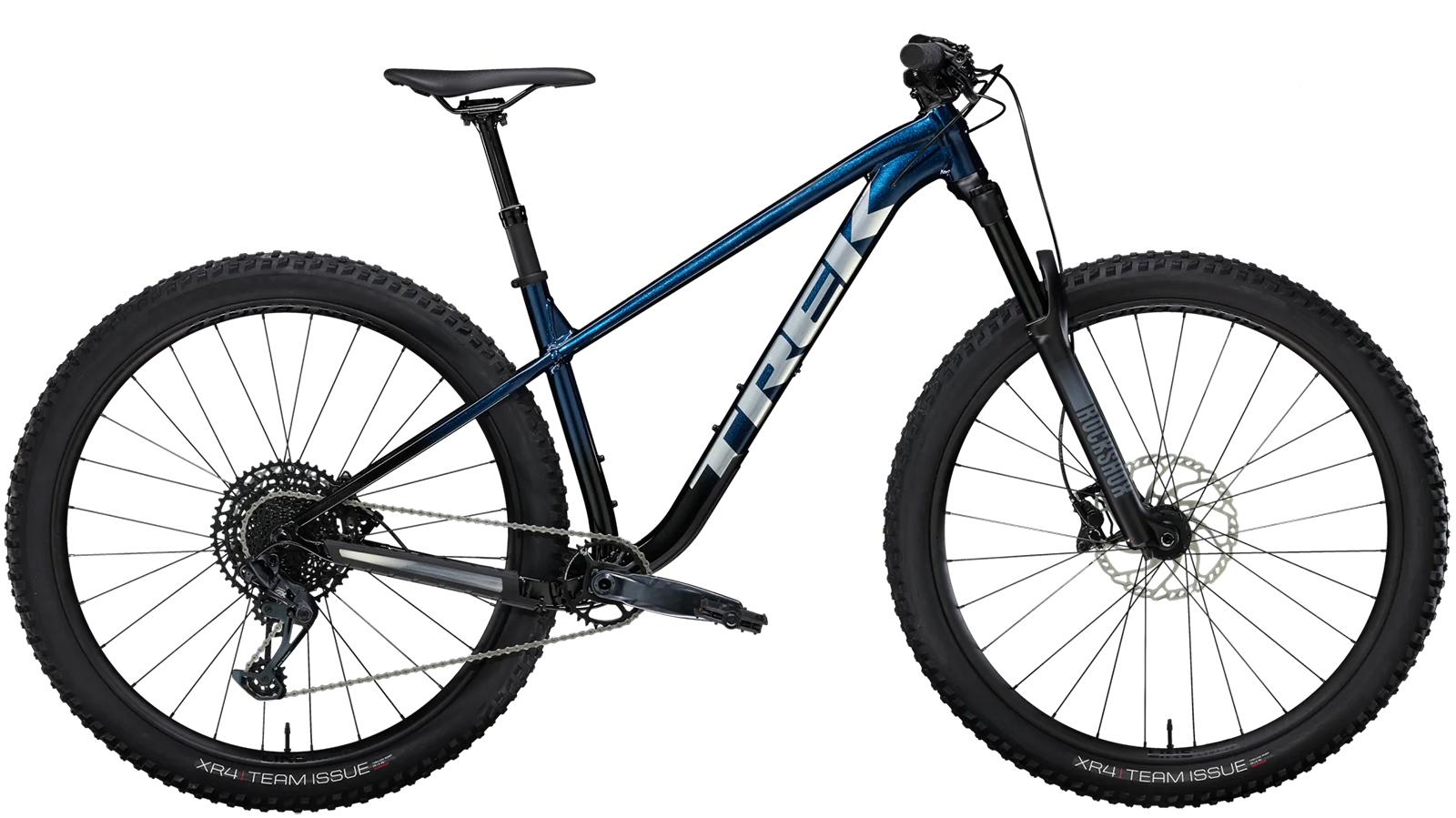
Trek Roscoe 8
Specifications
Reasons to buy
Reasons to avoid
Trek's Roscoe is a hardtail for those looking for serious shredding across a variety of singletrack terrain. The trail-ready geometry includes a 65-degree head tube angle, 73-degree seat tube angle, 430mm chainstay, and a long reach. It also has a rear through-axle which strengthens the rear end and increases wheel compatibility for future upgrades.
A 140mm RockShox 35 Gold RL fork propels this 29er down the trail, while SRAM drivetrain and Shimano brake components are found in the cockpit. The Roscoe 8 is the mid-range model, which comes with a dropper post – an extremely useful component. Budget riders can check out the Roscoe 7, while riders looking for fancier components can look at the Roscoe 9.
2. Best bombproof
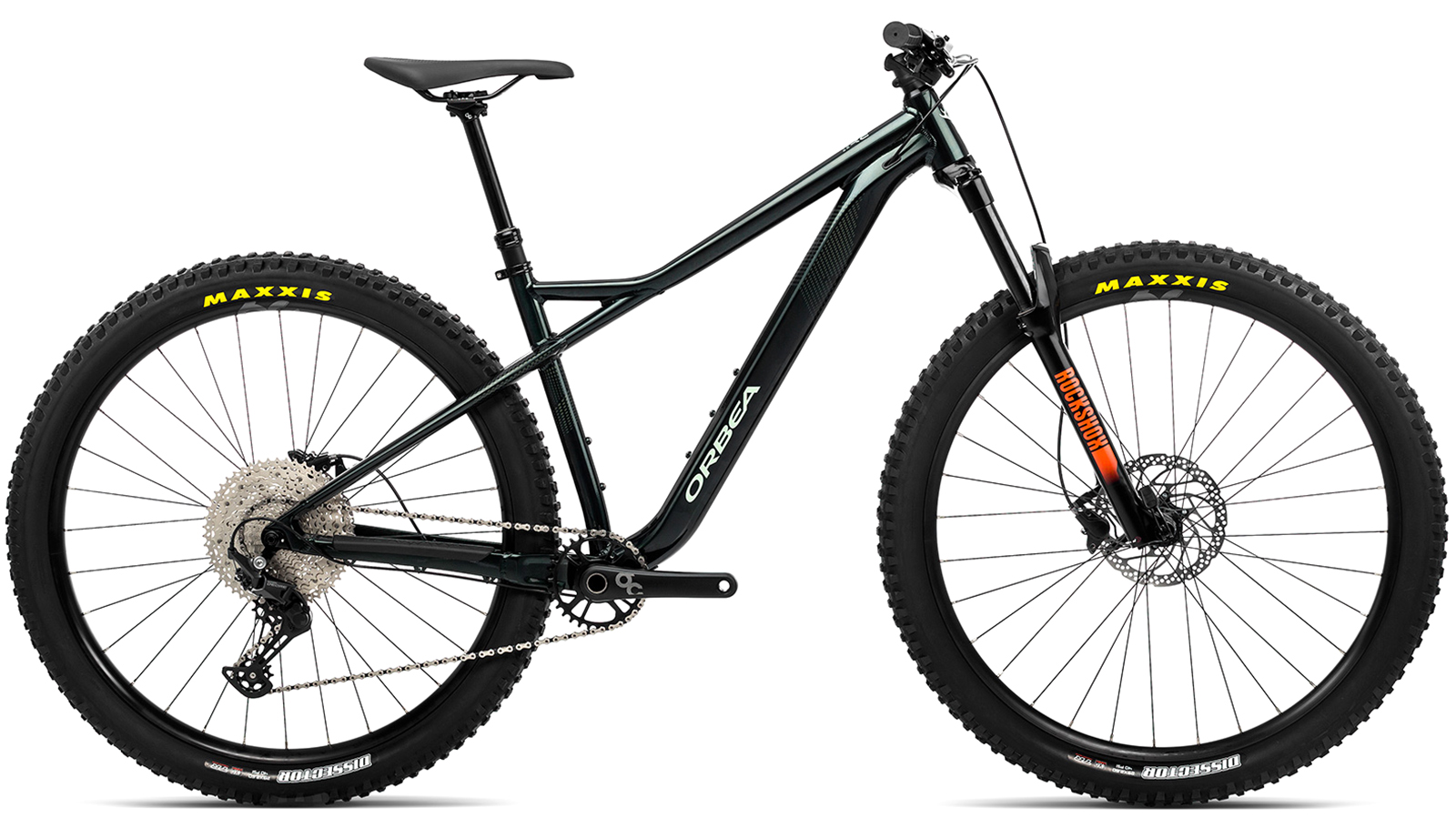
Orbea Laufey H30
Specifications
Reasons to buy
Reasons to avoid
This hardtail from Orbea sports a 140mm fork and a dropper post for aggressive trail riding. The quality spec means those beginner riders who quickly progress their riding skills won't outmatch their bike's components.
Bolted onto the triple-butted aluminum frame are a Shimano Deore drivetrain and Shimano M201 hydraulic disc brakes. The wheelset is Orbea's tubeless-ready OC1 29er model, which comes wrapped in 2.6in Maxxis tires to keep you gripping the trail surface.
For more info on the H30's geometry and specs, read our news piece about Orbea's 2023 Laufey updates.
3. Best for tough trails
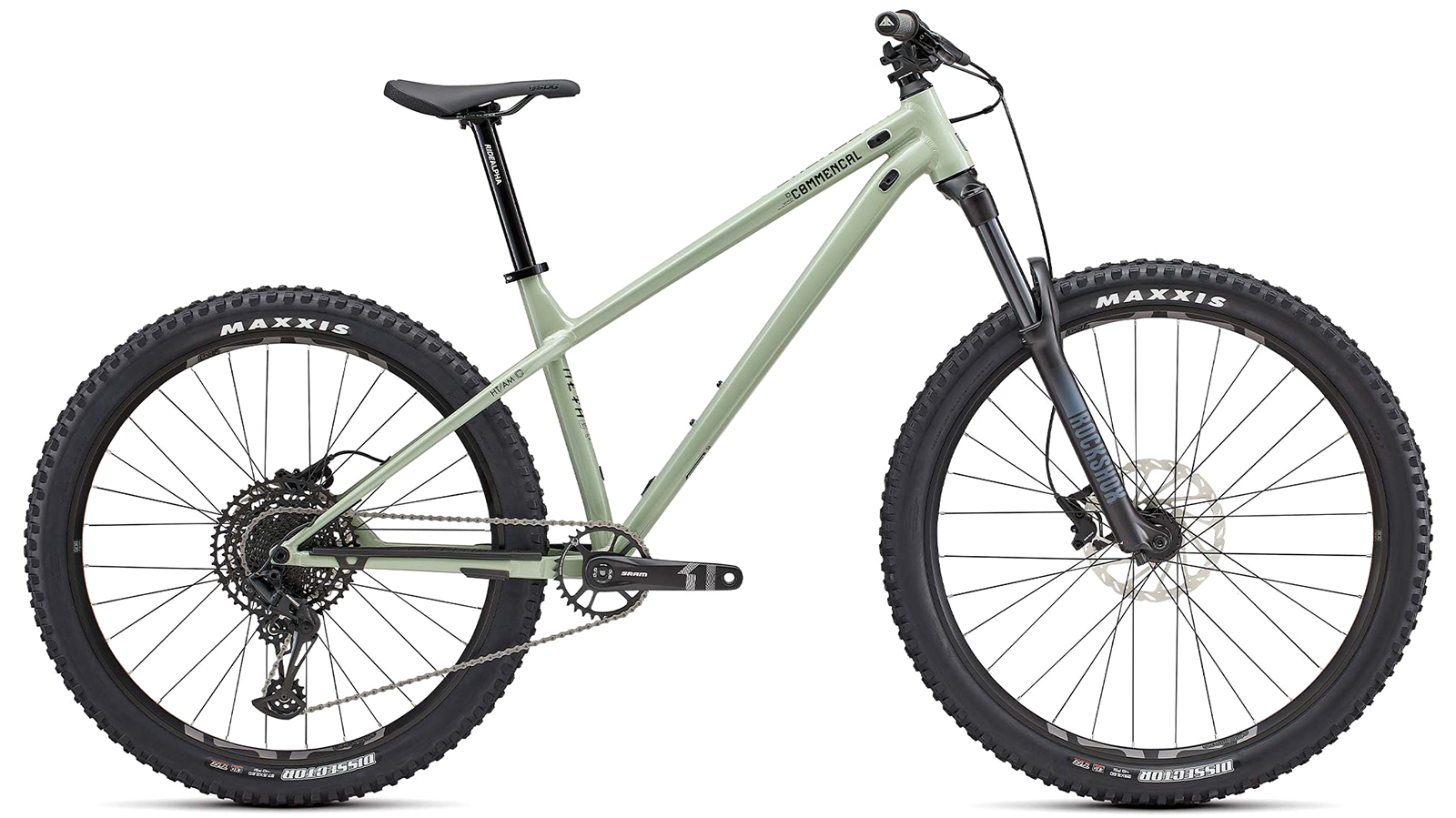
Commencal Meta HT AM Origin
Specifications
Reasons to buy
Reasons to avoid
Based out of Andorra, Commencal is a direct-to-consumer brand that has long sold bikes through its own website offering well-specced rowdy rides at prices other brands have struggled to match.
Commencal technically classes the Meta HT as an enduro bike, likely due in part to its 150mm fork and super slack 65-degree headtube angle. If you're planning to tackle an EWS (Enduro World Series) course, a rear shock is probably a must, but the Meta HT is a hardy hardtail that is a capable descender. The geometry encourages descending at lightspeed and provides enough front suspension to get you out of a lot of trouble.
For the money, the Meta HT AM Origin is great with a RockShox 35 Silver fork, and a SRAM 12-speed groupset. The only thing missing is a dropper post.
4. Best for XC speed
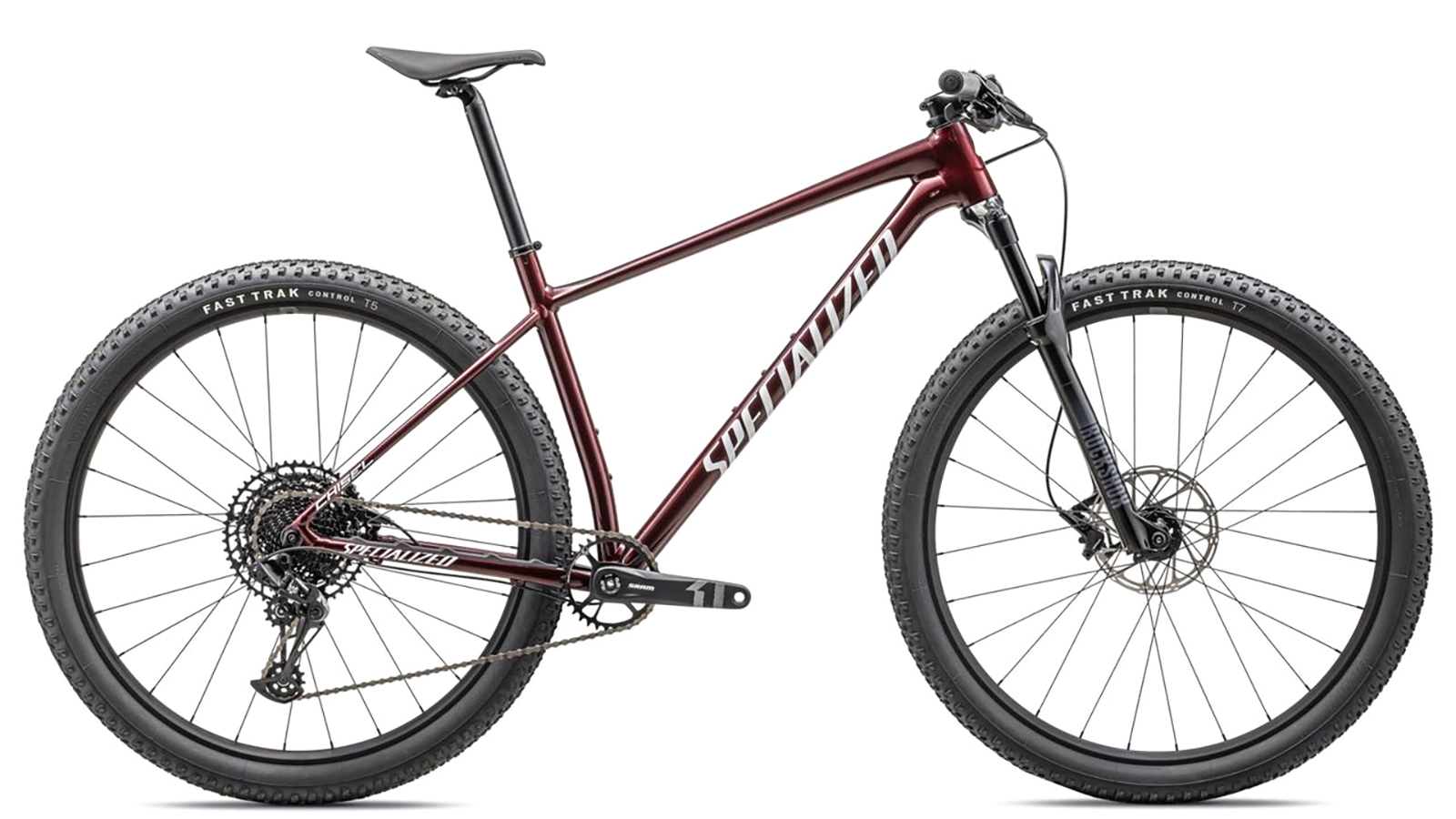
Specialized Chisel Comp
Specifications
Reasons to buy
Reasons to avoid
If you are more interested in lap times than airtime then Specialized has the budding XC racer covered with its Chisel range. With 100mm of travel and a lightweight alloy frame, the Chisel is ready to cover ground quickly and efficiently. In fact, Specialized claims the Chisel is one of the lightest alloy mountain bike frames available at 1,350g, making the Chisel Comp a worthy candidate for upgrades as you get more serious about riding.
Stock components are a mix of functional name-brand kit from the likes of RockShox and Shimano as well as Specialized's own-brand kit which is used around the touchpoints and finished off with quick Specialized Fast Trak tires.
5. Best full-suspension
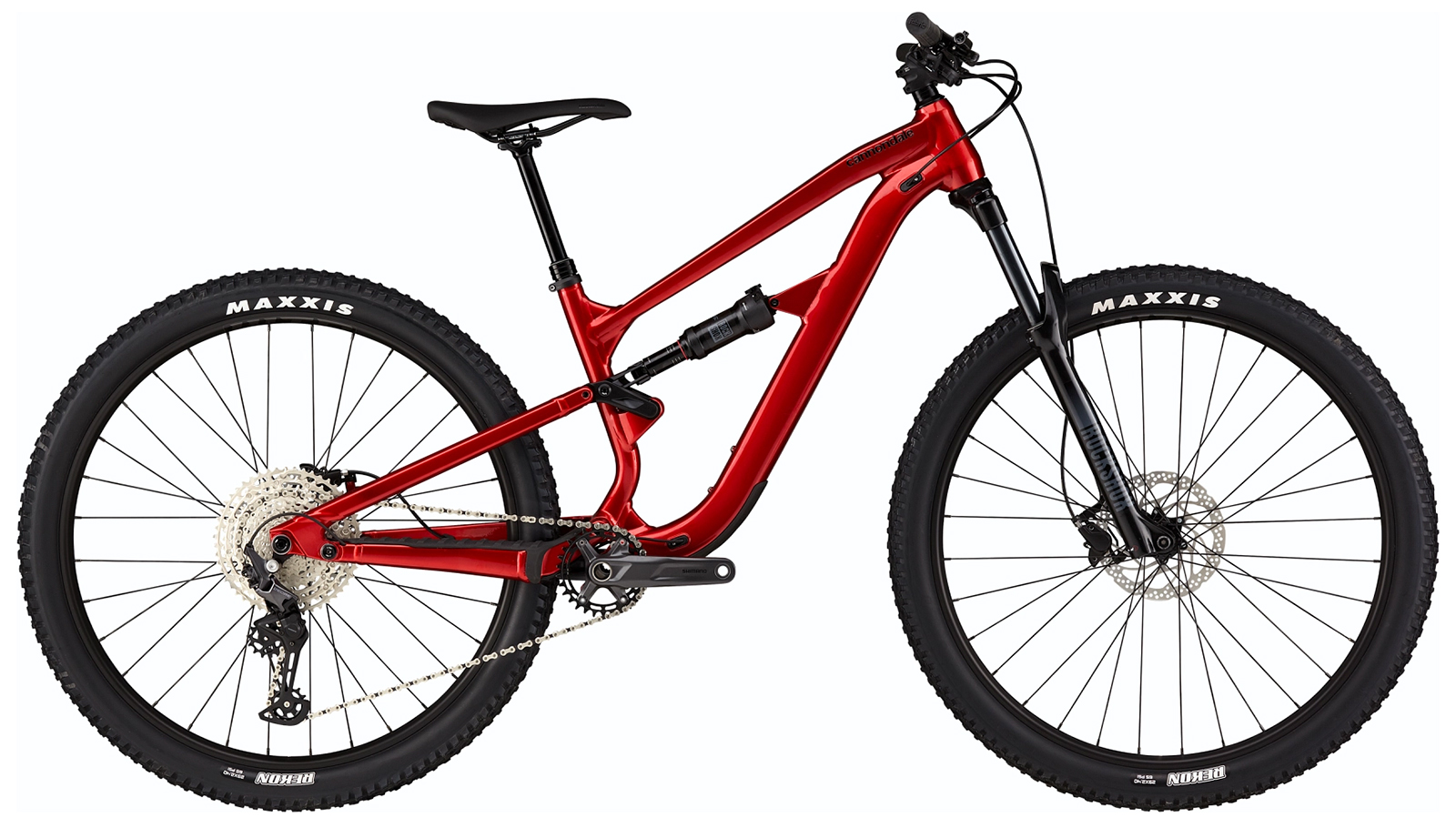
Cannondale Habit 4
Specifications
Reasons to buy
Reasons to avoid
You must be living under a rock to be a mountain biker and not have seen 50to01's videos of them hitting huge jumps and tearing down trails. Cannondale's Habit might be marketed as a trail bike but in the right hands, it's clearly far more capable. This is down to Cannondale's superb suspension platform which absorbs trail trauma and allows you to ride as hard as you can rather than punishing you when your talent runs out.
Cannondale has chosen RockShox dampers front and rear, a SRAM drivetrain and Shimano brakes. A 150mm dropper will get the saddle out the way on descents while the Maxxis tires keep you on the trail in a range of conditions. Cannondale uses what it calls Ai Offset for its frames, this moves the drivetrain 6mm outboard which results in a stronger rear wheel and more mud clearance. The downside is the Habit requires proprietary cranks and special rear-wheel dishing which should be considered if you are planning on future upgrades.
Read our full review of the Cannondale Habit 5, which features a different component spec but the same great handling characteristics.
6. Best for trail shredding
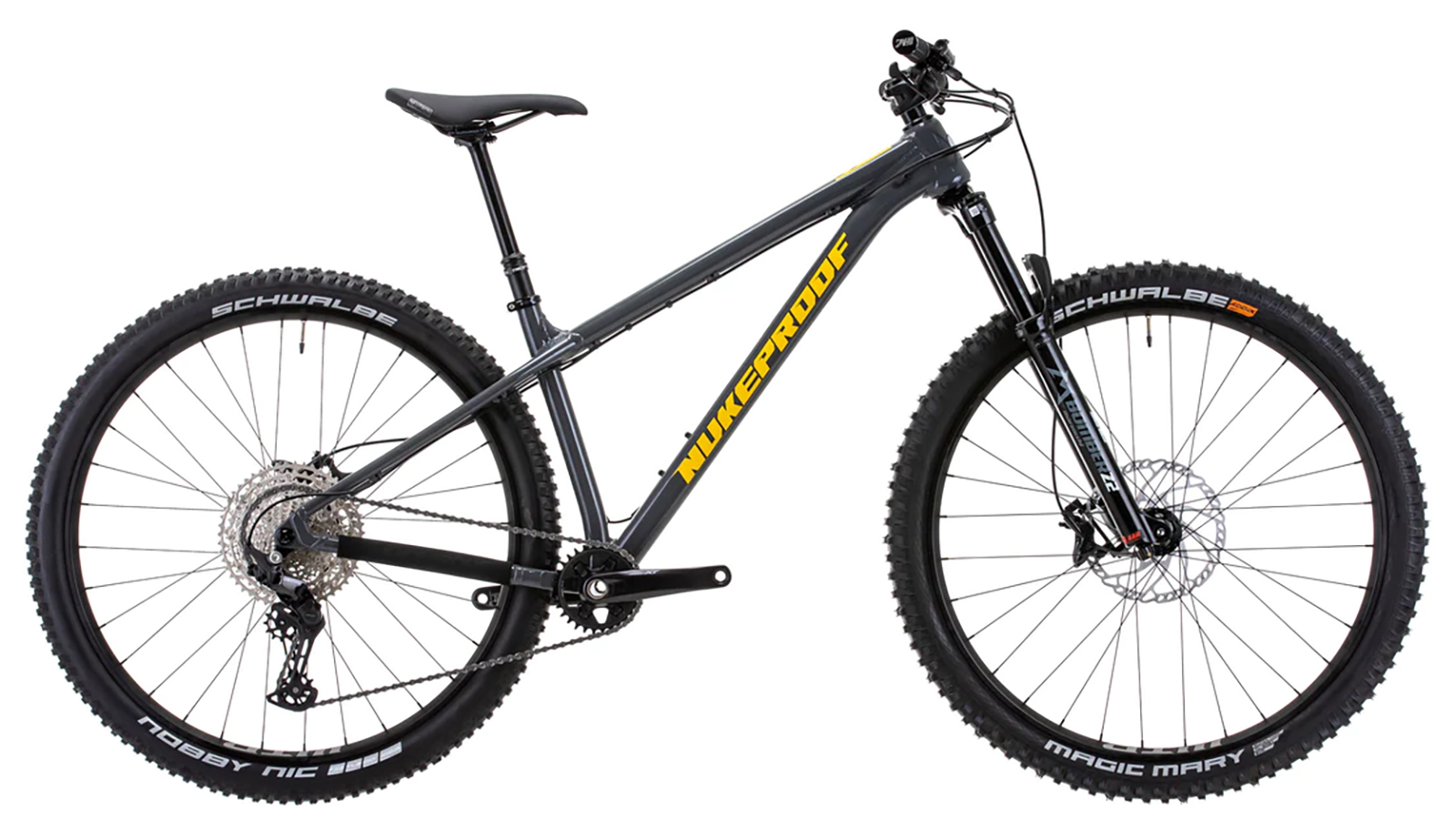
Nukeproof Scout 290 Comp
Specifications
Reasons to buy
Reasons to avoid
Nukeproof's Scout has long been one of the most highly regarded hardcore hardtails around. The latest four model range uses a frame redesigned for 2022, which with more progressive geometry and a lower bottom bracket, make it more capable than ever.
The Comp model comes with a 140mm Marzocchi Bomber Z2 fork, Shimano Deore 12-speed drivetrain, and Nukeproof Neutron V2 Hub wheels with WTB KOM Trail i30 rims shod with a Schwalbe Magic Mary Snakeskin Addix Soft upfront and a Hans Dampf Snakeskin Addix Speedgrip at the rear.
If you're looking for an aggressive hardtail for trail shredding, then the Nukeproof Scout will definitely satisfy your needs.
How to choose the best mountain bikes for beginners
What type of mountain bike should I buy?
There are different types of mountain bikes that are categorized based on their geometry, the amount of suspension travel, and the intended riding scenario.
On one end of the spectrum, we have the cross-country bike, which has steep angles, limited tire clearance, between zero and ~100mm of suspension travel, and comes in hardtail or dual suspension varieties. At the opposite end, you have downhill bikes, which feature super-slack angles with ~200mm of suspension designed to take a beating and rumble down the steepest, gnarliest terrain.
Unless you're planning on racing either of these disciplines or the trails in your area massively favor one end of this spectrum, we think you should spend your money on the best trail bike you can.
Trail bikes are available in dualies and hardtails and are designed to do everything well. With around 120-140mm of travel, this category of bike has stable handling and the geometry is such that you can happily ride it on an all-day epic, or even laps in the bike park. A bike in this category is a generalist and will grow with you as your skills improve.
What do I need to know about suspension?
Modern suspension is genuinely amazing and can smooth out bumps that would rattle your fillings loose only a few years ago, while also providing a stable pedaling platform so you don't lose watts bobbing up a climb.
Even at the beginner level, you should look for air suspension, as this allows you to tailor the sag to your weight. We'd also lean more on the side of hardtails over dual suspension for riders just starting out. With a more straightforward frame design, a hardtail will have nicer components than a full-suspension bike for the same price. A hardtail will also help you to develop stronger fundamentals which you will build upon as you get better on your bike.
How much should I spend on my first mountain bike?
While we could throw out a number and include a whole bunch of bikes that hit that price range, we don't necessarily think that's how you should pick your first mountain bike – ultimately the decision will come down to how much you have to spend, and the value you may attach to riding your bike.
There aren't many genuinely bad bikes nowadays, however you get what you pay for in terms of quality. If you buy a $500 bike, it's going to be specced with inferior parts, and in the long run, it will likely end up costing you more, because they will inevitably break and need to be replaced. The reason seasoned mountain bikers can justify spending the price of a 2016 Honda Civic on a mountain bike is they will spend hundreds of hours riding it, and the comfort and ride characteristics that come with such a product over that period of time are worth it.
Having said that, if you're just getting into mountain biking, remember the bike itself isn't the only cost of entry; you're going to need a helmet, multi-tool, track pump, shock pump, pedals – you get the idea. When you do decide to pull the trigger, make sure to budget for these mountain bike essentials as well.
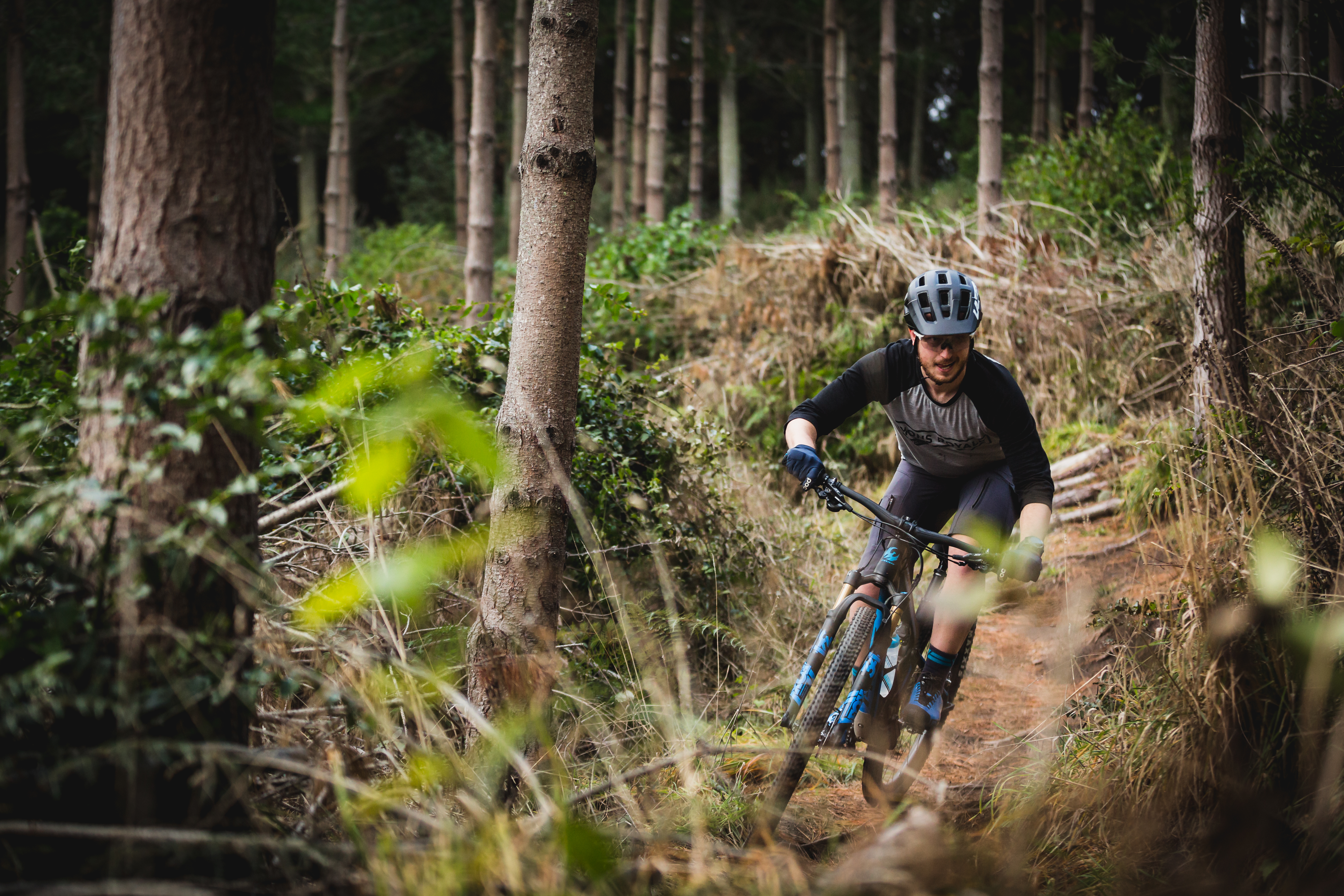
Born and bred in Colorado, and now based in Australia, Colin comes from a ski racing background and started riding as a way to stay fit through the summer months. His father, a former European pro, convinced him to join the Colorado State University collegiate cycling team, and he hasn't stopped since. It's not often he pins on a number nowadays, and you'll likely find him in search of flowy singletrack, gravel roads and hairpin corners. Colin has worked at Bikeradar and is a regular contributor to Australian Mountain Bike and Cyclist magazines.
Rides: BMC Team Machine SLR01, Trek Top Fuel 9, Ibis Ripley
